Free Tropical Runtz seeds on orders over $150!
Understanding the cannabis plant’s structure and life cycle is critical for effective production. Growers may use this knowledge to optimize conditions for each growth stage, resulting in healthier plants and larger harvests. This article will explore the main categories of cannabis strains and how to identify and understand them.
Cannabis is dioecious, which means it contains separate male and female reproductive parts. Growers like to focus on female plants when it comes to cultivation since they yield the buds cannabis lovers all know and love. However, males generate pollen, which may be utilized to form seeds on a female plant. There are three main cannabis species: Sativa, Indica, and Ruderalis.
Cannabis is a varied and complex plant that has been utilized for thousands of years for various reasons. However, not all cannabis plants are created equal.
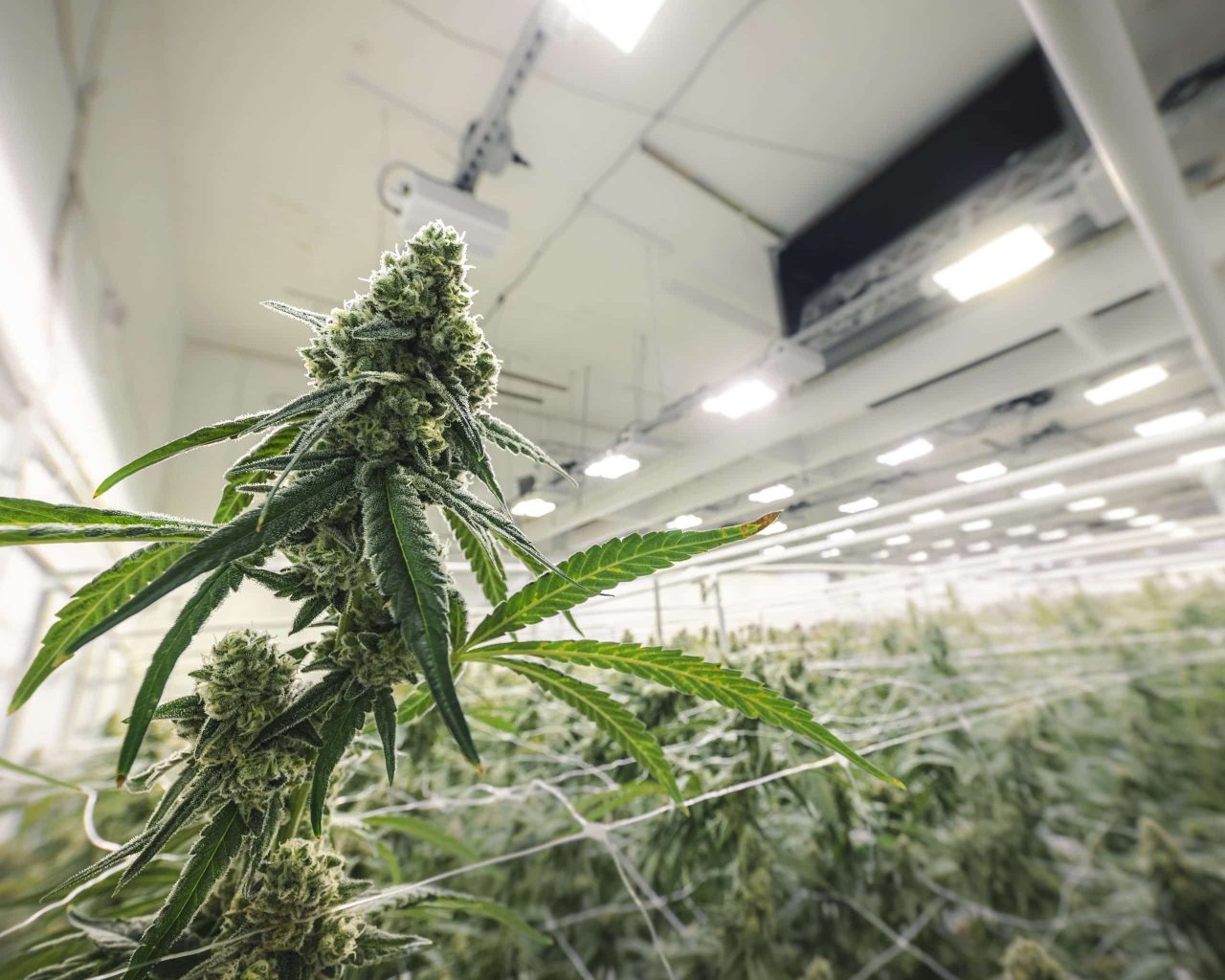
There are several cannabis strains with varying effects, tastes, fragrances, and therapeutic advantages. Here are the common types of cannabis strains available:
Sativa is a cannabis strain native to the tropical areas of Central America, Africa, and Southeast Asia. These weed strains have adapted to their habitats by growing tall with thin leaves, allowing them to collect more sunlight in dense foliage. Growing cannabis indoors is a wonderful choice for developing your own Sativa plants at home because of the regulated atmosphere it provides. You should remember that Sativa grow taller than Indica cultivars; therefore, ample room is required for maximum development. Low-stress training (LST) can help you maintain your plants’ height while promoting even development.
Indica strains are indigenous to Afghanistan, Pakistan, and India, where they have been grown for millennia. Indica plants are distinguished by their small height, wide leaves, and packed buds. Indica strains are often simpler to produce than Sativa strains, making them popular among first-time growers. They blossom in a shorter period (typically 8-10 weeks) and may be cultivated both inside and outdoors. Because of their small size, they’re also ideal for growing room setups with limited space. When selecting an Indica strain, elements like climate, growth medium (soil or hydroponics), and desired effects must all be considered. Testing several cultivars and growth methods might assist you in locating the best Indica for your specific requirements.
The introduction of seedless cultivation technologies enabled the hybridization of many cannabis strain plants. Although the first hybrid plant was established in 1959, hybrids did not become popular until the late 1970s, when cannabis varieties became replicable. When producers began crossing varietals to uncover new features in their cannabis plants, the term “hybrid cannabis” arose. Hybrid strains can inherit traits from both Indica and Sativa lineages. Controlled breeding is used to create hybrid cannabis strains, ensuring that male and female plants with the necessary features are carefully picked. This procedure eliminates unintentional pollination and guarantees that the resultant hybrid keeps the desired genetic features.
Ruderalis is a unique cannabis subspecies with distinct traits that distinguish it from Indica and Sativa. Cannabis Ruderalis grows in areas with harsh climates, such as Siberia and Eastern Europe. Breeders and enthusiasts eventually discovered its particular autoflower feature, resulting in the production of autoflowering strains. Ruderalis plants grow to 1 to 2.5 feet (30 to 75 cm) in height, which is smaller than Indica and Sativa varieties. They have narrow leaves and sparse foliage, which allows more light to penetrate. One of Ruderalis’ distinguishing characteristics is its capacity to blossom regardless of light exposure, which means it moves from the vegetative to flowering stages depending on age rather than light cycles.
Autoflowering seeds are cannabis that start flowering when the plant reaches a specific stage of growth. Autos provide several advantages to farmers. Aside from blossoming dependent on age, current autos are tough and don’t make substantial compromises in terms of potency or yield. Although autos are somewhat less powerful and productive than photoperiod-dependent strains, they let gardeners be more hands-off with their plants and offer up the possibility of several harvests every season. The greatest autoflower strains are those that preserve the attributes of their original Indica or Sativa parent while capitalizing on the autoflowering feature provided by the Ruderalis parent.
Cannabis plants require a specific photoperiod to flower, usually needing more darkness than light in a 24-hour period. However, photoperiod plants blossom only under specified lighting conditions. That is, they blossom during a specified photoperiod, which is defined by the number of hours of sunshine vs total hours of darkness. Most indoor gardeners use a rigorous 12/12 light cycle to force photoperiod plants to blossom early. That is 12 hours of light followed by 12 hours of pure darkness.
No, autoflowering strains are not photoperiods. Autoflowering strains flower automatically after a certain vegetative period, regardless of the growth light cycle. However, photoperiod strains only flower when they receive 12 hours of light and 12 hours of darkness daily. Autoflowering strains are usually faster and smaller than photoperiod strains but also tend to produce lower yields and less potent buds. Some growers prefer autoflowering strains for their convenience and stealth, while others prefer photoperiod strains for their quality and quantity.
Yes, plants from fast-version cannabis seeds are different from regular photoperiod plants. Fast version cannabis seeds are a type of hybrid seeds that result from crossing a photoperiod strain with an autoflowering strain. They have the advantage of having a shorter flowering time, usually 6 to 8 weeks, without compromising the quality or yield of the buds. They are also light-dependent, requiring a 12/12 light/dark cycle to trigger flowering, unlike autoflowering strains that flower automatically regardless of the light cycle. Fast-version cannabis seeds are ideal for growers who want to harvest their crops faster and more frequently or live in areas with shorter summers.
It is critical to remember that most cannabis plants are dioecious, meaning that female and male plants differ significantly. Female plants produce cannabinoid-rich blooms, while male plants generate pollen sacs. A weed plant can emerge hermaphroditic and monoecious, which means it will contain both flowers and pollen sacs, although uncommon. Male plants are considered undesirable due to their poor cannabinoid output and the fact that they will seed if exposed to female plants. While this is detrimental for smoking, male plants serve a crucial role in growing and reproduction, and their fibers are also used.
Male cannabis plants develop pollen sacs used to fertilize surrounding female plants. They’re useful for developing new strains and play an important part in cannabis breeding. Regular cannabis seeds have a 50/50 probability of producing male or female plants. Females often display their pre-flowers (stamens) earlier than males. They have a circular look, similar to a miniature soccer ball at the point of a stick. These mature into pollen sacs, ready to fertilize your female plants. It is critical to become acquainted with male cannabis plant components, especially if you purchase regular weed seeds. If you don’t want to risk accidental pollination, quarantine the male plants as soon as possible.
Feminized weed seeds have a 99% chance of growing into female photoperiod plants. Depending on the quantity of light they get, they grow and reach the vegetation and blooming stages.
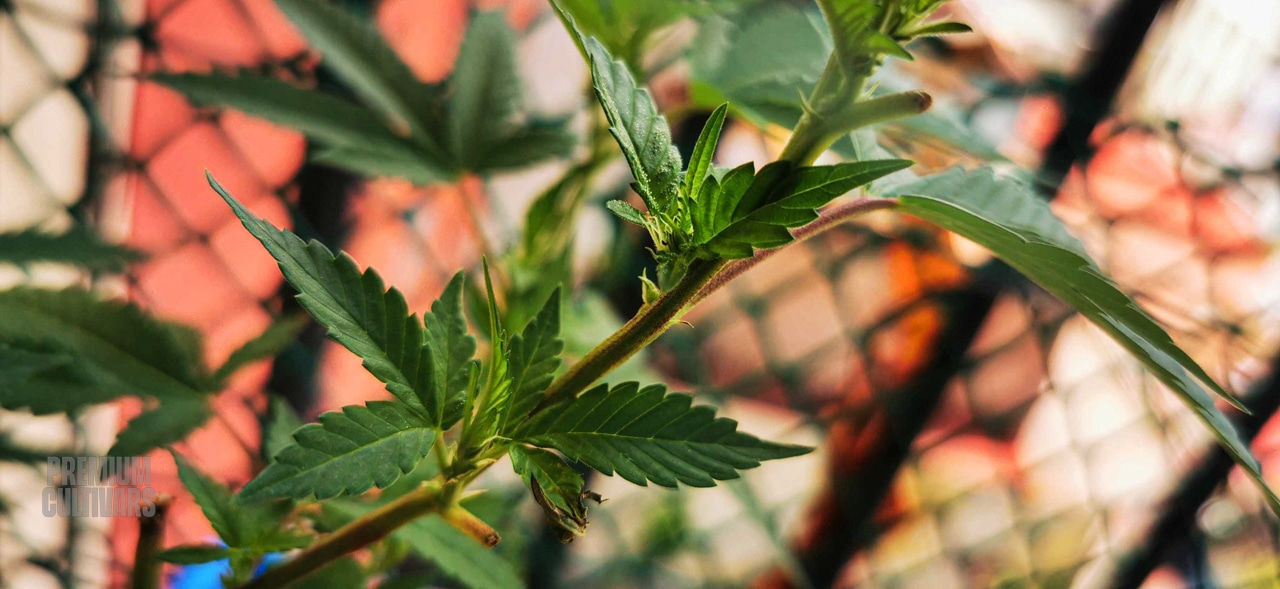
Female cannabis crops produce resin-soaked buds high in cannabinoid content, such as THC and CBD. The flowers also emit mouth-watering aromas, depending on the weed strain. For cannabis consumers, the buds are one of the most important elements of the cannabis plant. Before the flowering stage, look for long, pear-shaped calyxes, which are generally the first indication of the female gender.
A hermaphrodite plant develops male and female characters during cannabis cultivation. Due to light and heat stress, as well as bad genetics, the cannabis architecture might alter during growth. During the early and late flowering stages of cannabis, bananas, or ‘nanners,’ can emerge from the flowers.
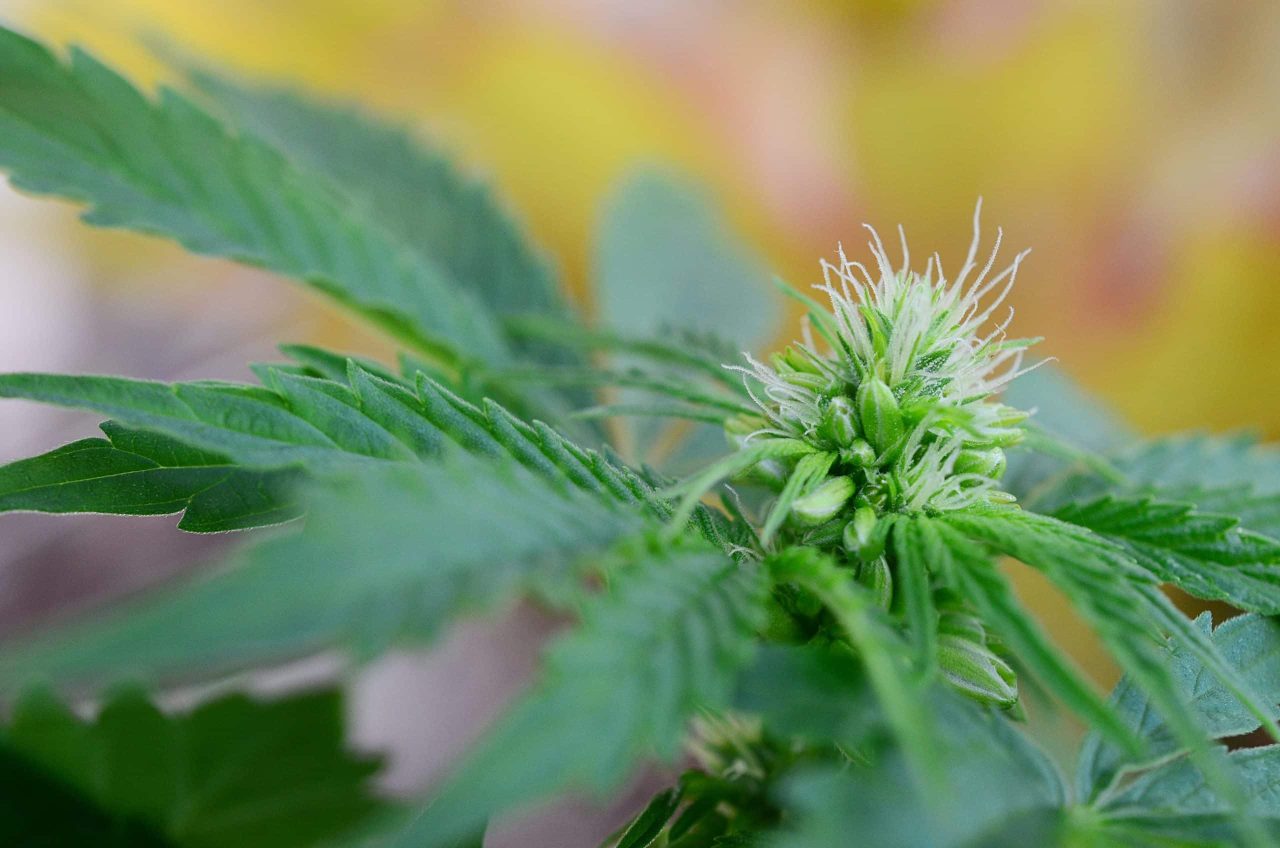
The lengthy, golden growths represent the male stamen. They may pollinate female plants at any moment, producing seed buds. You can take certain measures to avoid becoming a hermaphrodite such as investigating several strains because some are more prone to generating nanners. Additionally, avoid excessive heat and humidity, and avoid placing plants too close to your grow lights.
Cannabis bananas (also known as “nanners”) may be quite frustrating for growers. They are elongated yellow growths that look like bananas, hence the name, but they can also be white or lime green. These growths often occur on buds and might grow in clusters. These growths are male pollen sacs in a nutshell. They are usually found on male plants, although they can also suggest hermaphroditic features in female plants.
When these sacs emerge on buds, they begin pollinating anything within their reach. Ultimately, the female plants generate seeds after pollination rather than a cannabinoid-rich yield. As a result, most farmers dislike the look of bananas. The best way to avoid them is to know how to tell the difference between male and female seeds, as well as how to sex cannabis when it’s grown.
Cannabis pollen sacs are tiny, oval-shaped structures seen on male cannabis plants. This sac contains male reproductive cells, or pollen, fertilizing female flowers and producing new seeds. Pollen sacs are typically found in clusters on the tops of cannabis plant branches, maturing and releasing pollen over many weeks. These sacs may be seen where the plant’s branches or leaves meet the stem. Only when the pollen sacs are ready for fertilization do the sacs open. These sacs are subsequently carried by the wind and settle on the female plants, assisting them in the process of fertilization.
To spot pollen sacs in cannabis, you need to inspect your plants closely and regularly, especially during the pre-flowering and early-flowering stages. Look for sacs that are plump, green, or yellow in color and covered in a sticky resin. If you find any, you can remove them carefully with scissors or pruning shears or isolate the whole plant to collect the pollen for breeding purposes.
Whether you’re a novice looking to get started or a skilled cultivator looking to optimize your setup, here are some considerations to help you ensure a successful home grow:
Cannabis plant anatomy is intriguing to both cannabis farmers and users. Every part of the crop serves an important purpose. Here are the major sections of the weed plant and their functions.
The flowers hold most of the useful cannabinoids, terpenes, and compounds. The buds are then dried and cured. Cannabis users then grind them and smoke them to get the benefits. Unpollinated female plants produce tight clusters of seedless blooms.
Cannabis trichomes are the frosted resin film that covers the buds. These small crystals are important in the anatomy of cannabis because they contain cannabinoids, which are required for hash generation.
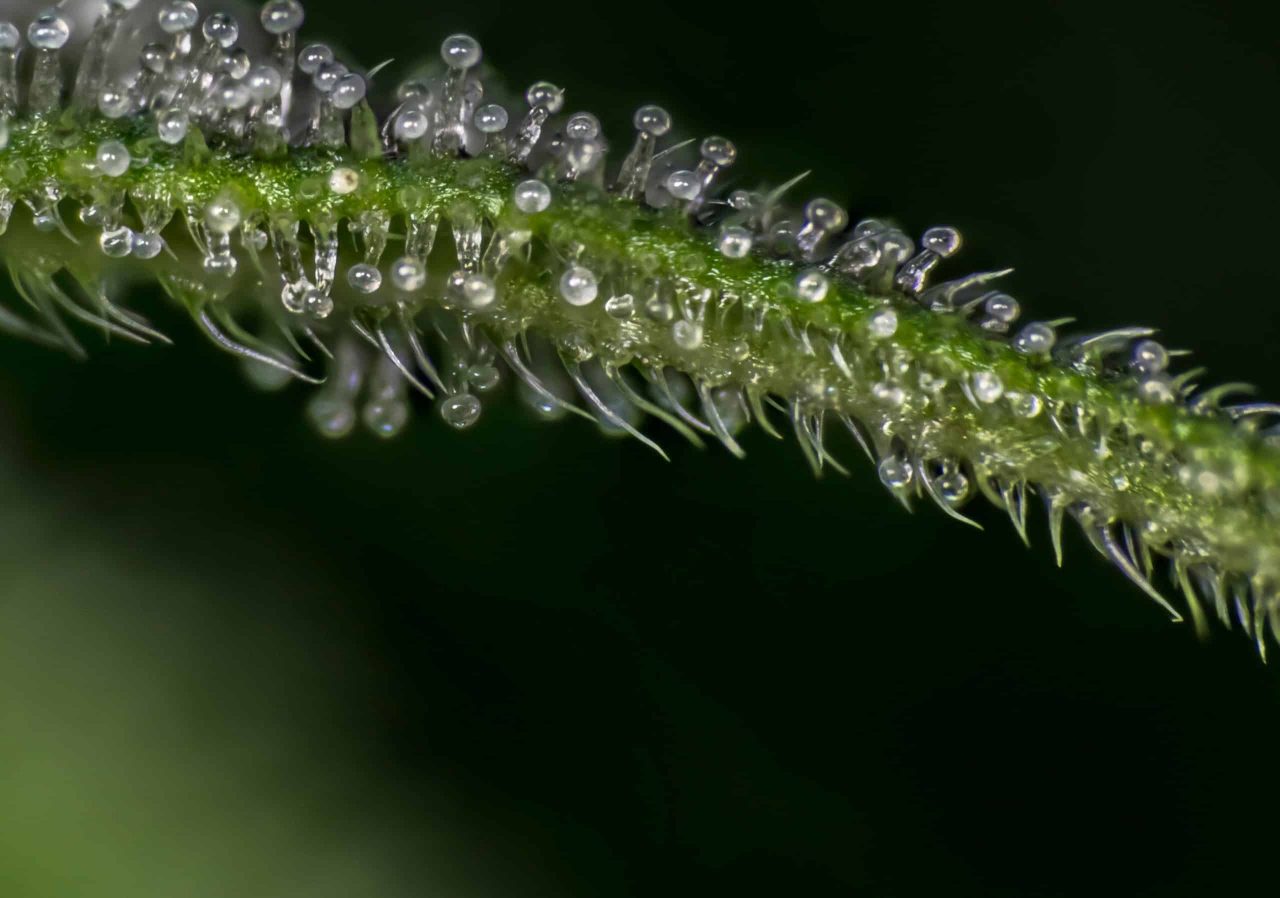
Trichomes develop from transparent glands on weed plants’ stems, leaves, and calyxes. They also protect the weed plant from predators and environmental dangers.
The colas are the most visually appealing portion of the cannabis plant structure. These lovely clusters of densely packed buds may be found practically anywhere on the cannabis plant. The major is a solitary apical bud on the weed plant’s upper peak. If you trim the lowest leaves to maximize light penetration, the other groups of colas can generate significant harvests.
The green-fingered cannabis leaf is a well-known symbol of the 420 culture. The fan leaves of a cannabis plant may contain traces of THC and CBD levels. They’re the components of a weed crop that capture sunlight. Fan leaves feature enormous 3-13 veined leaflets that change color during the plant’s life cycle. In colder evening temperatures, the foliage of certain strains displays beautiful purple tones. They’re also a good indicator of how healthy your cannabis plants are.
Sugar leaves, as the name implies, contain resin. They are little, icy, and grow around the buds. Due to their closeness to cannabis flowers, sugar leaves frequently develop trichomes. Cannabis users occasionally harvest them to extract THC and CBD for various cannabis products.
The pistil is an important aspect of the cannabis plant structure. The sexual organs of the cannabis crop are found here. They have stigmas, which are tiny, hair-like threads that collect cannabis pollen from a male plant crop. During a cannabis plant’s life cycle, the stigmas change color from white to yellow, orange, and even red. They are necessary for reproduction but do not add to potency, taste, or scent.
The bract is a tear-shaped leaf that grows near the reproductive region of a female crop. It has resin glands and generates the most beneficial terpenes and cannabinoids of any cannabis plant portion. The calyx is a transparent covering that arises at the base of a flower and protects the ovule. It is not visible to the human eye since it is well hidden in the bract.
The node is the point at which a branch connects to a stem or another limb. It is important in weed plant anatomy since it is where you can tell the gender of a cannabis crop. Examine the nodes for evidence of male pollen sac development.
Roots carry water and other necessary nutrients from the soil into the plant. A primary taproot emerges from a seed and branches into a fibrous network within the soil as it grows. Cannabis plants have tiny, white roots that tend to fill their pots. This results in forming a sponge-like root network, which is required to fulfill the plant’s high water demands.
THC and CBD, the two principal cannabinoids contained in cannabis, have a significant influence on the effects of various strains. These cannabinoids play an important part in defining the effects of various strains since larger quantities of each component can cause diverse results. Understanding how these levels affect the whole experience is critical for users seeking their ideal strain.
Stems and stomata play a vital role in cannabis growth and development. They determine how the plant responds to environmental factors such as light, temperature, humidity, and CO2 levels. They also influence the quality and quantity of the final product.
Stomata are microscopic openings on the leaves of cannabis plants that play a vital role in the daily functioning and, subsequently, the overall plant’s health. They act as mini two-way tunnels, allowing carbon dioxide to enter while oxygen and water exit. The most essential function of leaf stomata is absorbing CO2 – taking in large quantities for photosynthesis to occur optimally. The plant flourishes when enough gas is present (when the stomata are open). If there’s too little, growth slows. The opening and closing of stomata in weed plants is influenced by environmental conditions such as light, humidity, and access to CO2. The main role of stomata in the cannabis plant’s life is to:
The stem is one of the most important elements of a cannabis plant. The stalk supports the cannabis plant’s lateral branches. It is split by nodes and offers support and structure to other elements of the weed crops. Because it contains the vascular system, it carries moisture and nutrients from the roots to the fan leaves. Sugars and starches are also carried around the plant via the stem for storage or usage.
Cannabis calyxes are a collection of small, tear-shaped structures found at the center of every plant. They are the first things that appear after cannabis reaches the blooming stage of a cannabis plant’s development. They are essential to the plant’s survival and play an important part in the formation of buds, which are large clusters of these calyxes.
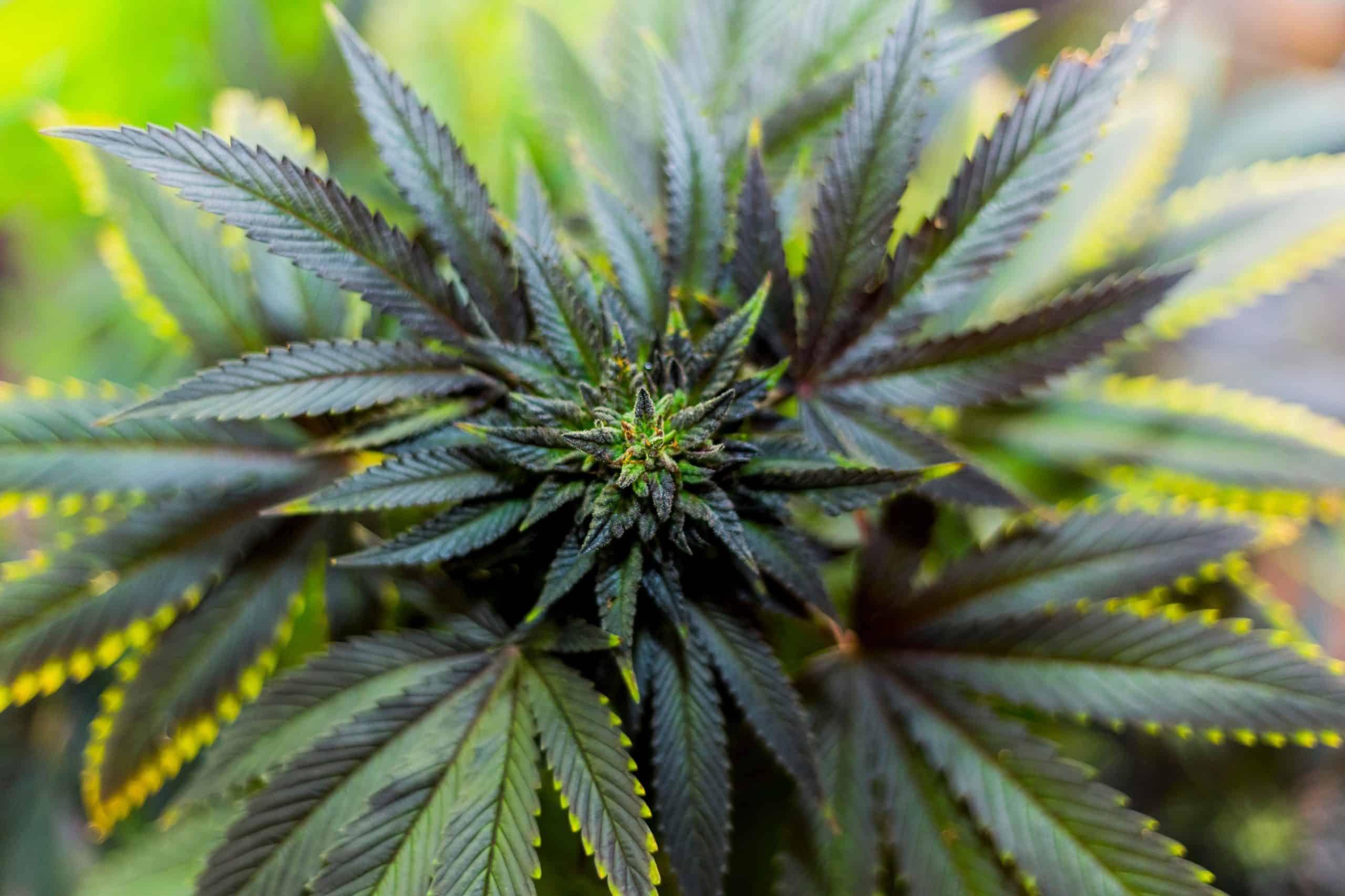
Calyxes are responsible for developing the weed plant’s pistils, the long, hair-like strands stretching from the buds. These pistils begin white during the blossoming stage of the plant and gradually become orange, brown, or red as the cannabis grows.
The cannabis root system serves as the plant’s foundation, supplying it with water and necessary nutrients. The taproot develops downward in the earth, looking for nutrients, after emerging from the cannabis seed. In the soil, the roots form a web-like pyramid structure. They also store carbs, starches, and sugars for when the crop enters the blooming stage. Keeping your weed plants’ roots healthy will help them to grow strong and produce large, gorgeous blossoms.
Cannabis roots are the most important component of your favorite green plant. Your plant can live without branches, foliage, and colas, but not without the component that roots and nourishes it. Solid roots are essential for your cannabis farming adventure. They ensure that each small cannabis seed thrives in its environment and develops into a large, bountiful plant. While fundamental issues, such as root bound, might sometimes be difficult to uncover, prevention is critical. If you suspect you are experiencing this issue, take action as soon as possible. Most weed roots’ health issues may be treated quickly with adequate work and attention.
Cannabis leaves are essential to the plant’s biological functions. They are the primary locations for photosynthesis, which is the mechanism by which energy from the sun supports plant development. Cannabis leaves play a variety of critical roles in the health and growth of your plant.
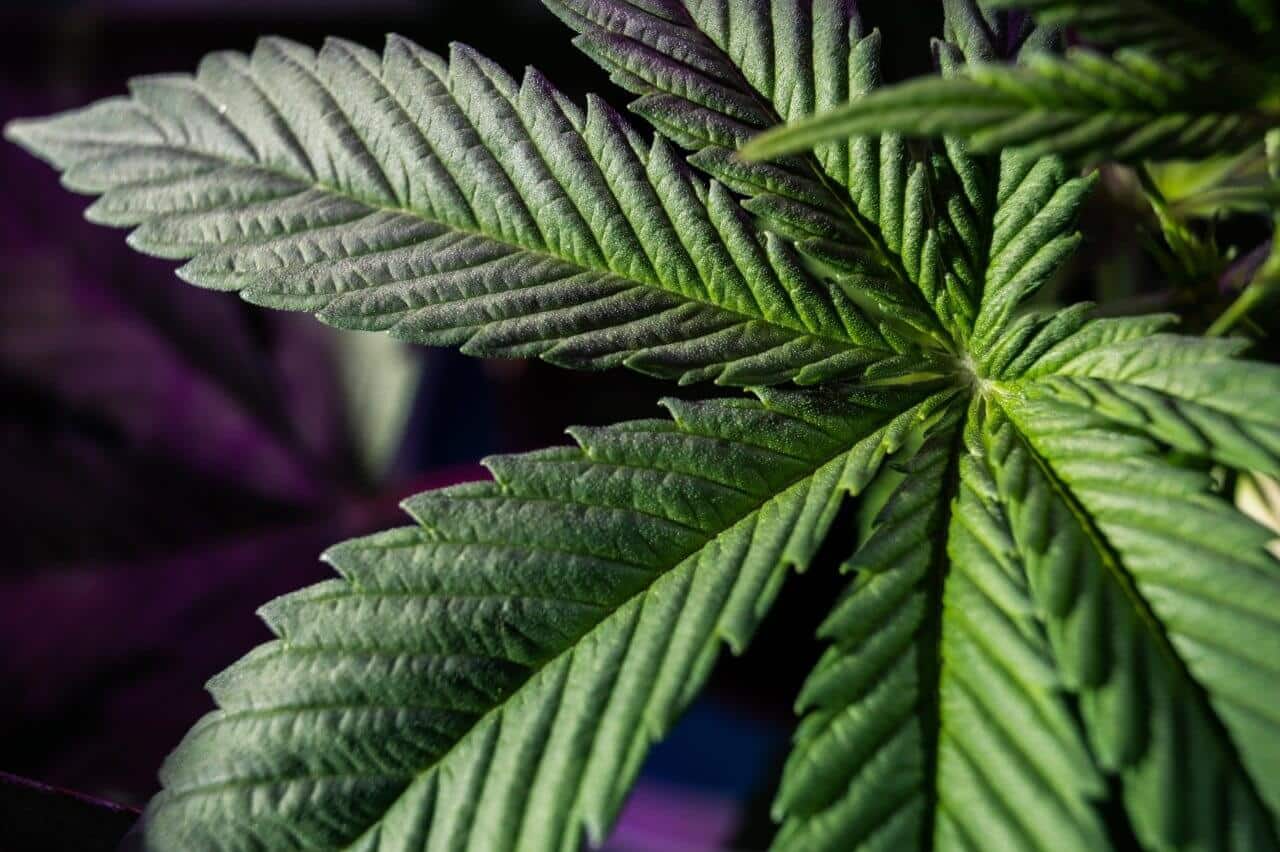
The most critical biological activities your plants require to develop and flourish occur in their leaves. In terms of nutrition, the leaves of your cannabis plants can even aid in nutrient absorption by foliar feeding, which is accomplished by spraying liquid fertilizers directly onto the cannabis leaf. During the flowering phase, the leaves can even store nutrients for your cannabis plant.
Aside from playing several functions in your plant’s biological activities, the leaves may also be used to distinguish between various cannabis strains. Moreover, despite the enormous number of diverse strains available, you don’t need to be a cannabis leaf anatomy specialist to readily identify them into one of the four categories of leaves. Despite the presence of four distinct kinds of cannabis leaves, they all contain tiny levels of THC that may be extracted.
The most important variables to consider while producing cannabis are:
Having a healthy cannabis environment based on the science of cultivating top-tier, medical-grade cannabis is critical for achieving consistent outcomes, provided you start with decent genetics. Cannabis cultivation for optimal growth and cannabinoid production requires specific conditions:
Cannabis pest control is a common challenge for cannabis growers, especially growing cannabis outdoors. Many weed pests, like spider mites, aphids, and fungus gnats, can infest and damage cannabis plants. These pests feed on the plant’s sap, leaves, roots, or flowers and can reduce the yield and quality of the harvest. Some of the methods to prevent or get rid of cannabis pests are:
Pruning cannabis plants is an important method that can have a big influence on the quality and output of your crop. You may improve airflow, light penetration, and bud growth by eliminating particular plant portions. Pruning weed plants effectively enhances plant health, increases bud output, and controls plant size and form.
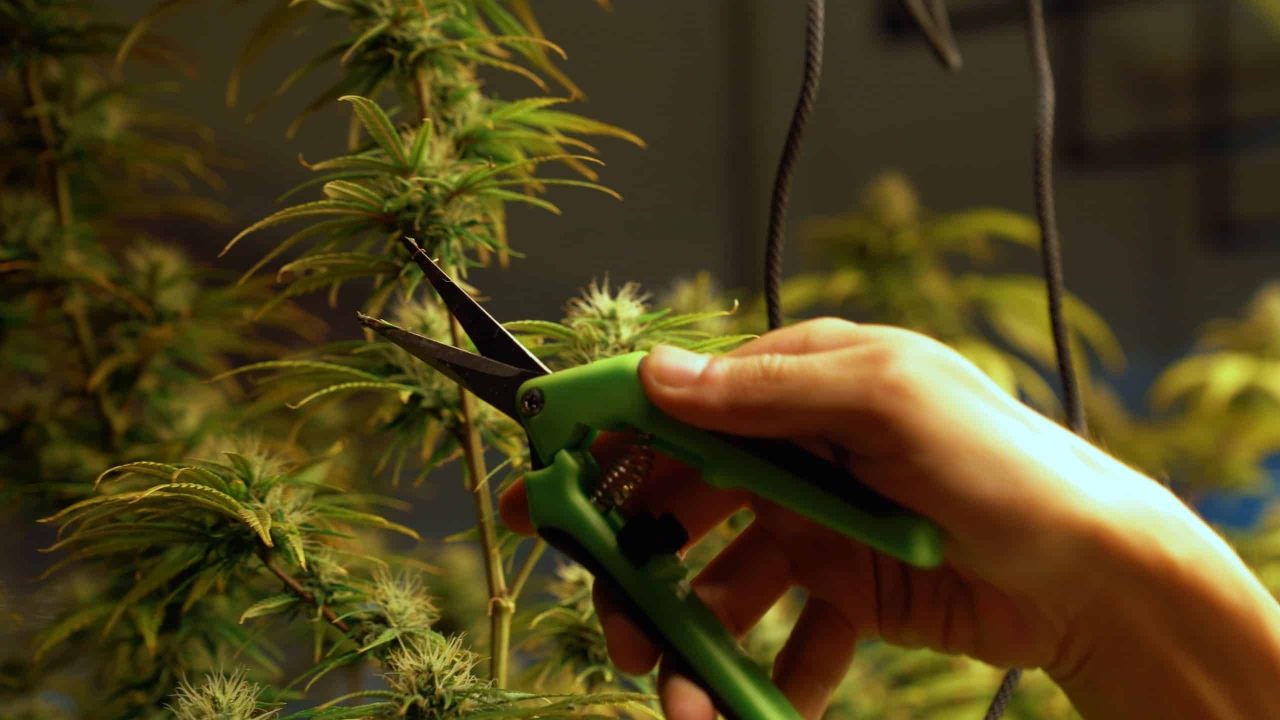
You may obtain healthier, more prolific cannabis plants by knowing the growth stages, utilizing the correct equipment, and following proper pruning practices. Regular maintenance and monitoring are critical for maintaining the proper form and increasing crop production. With experience and careful observation, you can master cannabis plant pruning and get the rewards of a robust cannabis harvest.
It is critical to provide your plants with the proper nutritional balance for maximum cannabis development, such as nitrogen, phosphorus, and potassium. Nitrogen promotes strong vegetative growth, phosphorus promotes root development and blooming, and potassium promotes general plant health and stress resistance. These three components should be present in proper ratios (NPK) in a well-rounded weed fertilizer for each phase of plant growth.
While macronutrients are essential for cannabis growth, plants also require several micronutrients in lower quantities. Among them are calcium, magnesium, sulfur, iron, manganese, copper, zinc, boron, molybdenum, and chlorine. Despite their minimal requirement, micronutrients play an important role in enzymatic activities, photosynthesis, and general plant health.
Note: Choose a high-quality, balanced fertilizer with a full nutrition profile to ensure your weed plants receive the required macro or micronutrients.
The most critical aspect of producing a successful cannabis-growing environment is lighting. To develop and produce high-quality flowers, cannabis plants require precise types, wavelengths, and exposure durations. Blue and red spectrum light are the two major forms of light required for cannabis development, with blue predominantly dedicated to vegetative growth and red mostly to blooming. However, photoperiod cannabis requires exposure time to sustain a vegetative or flowering plant.
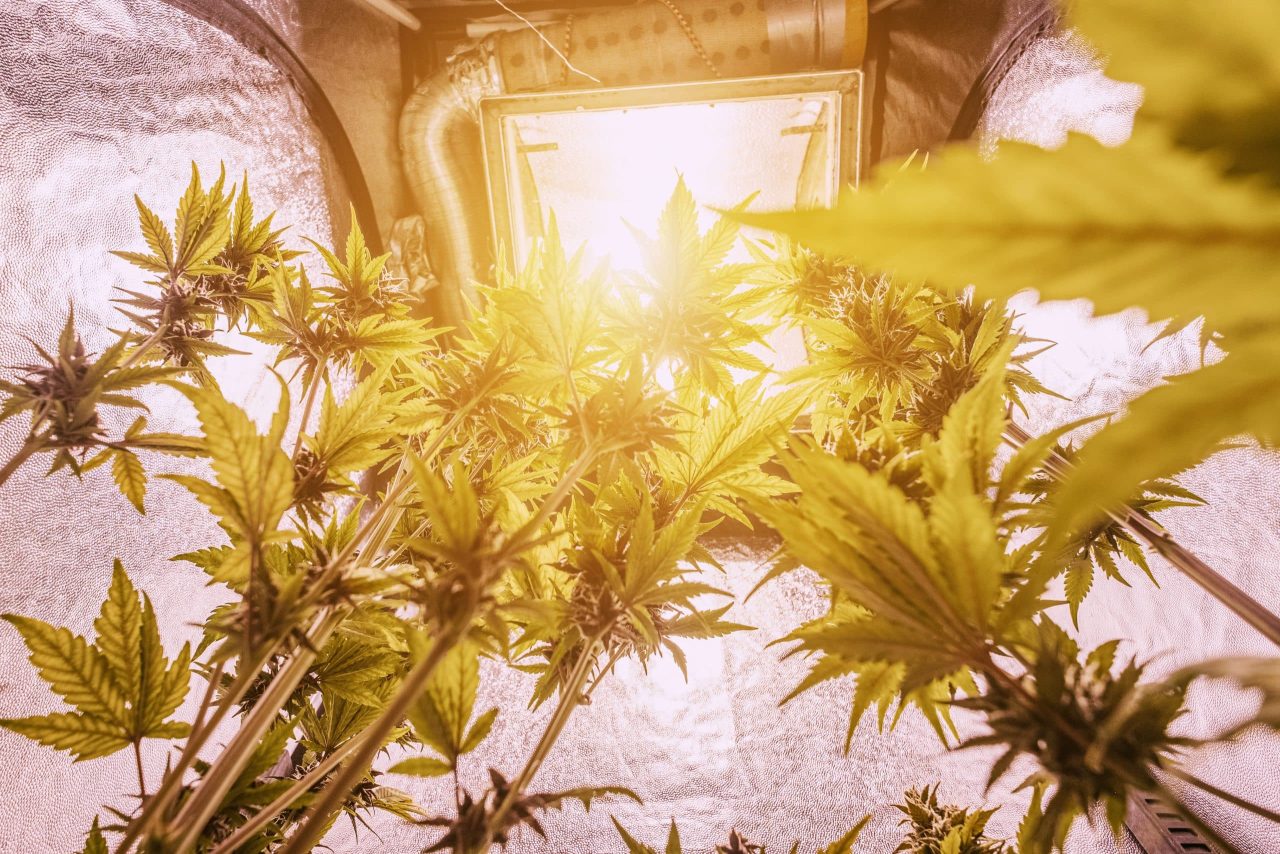
Growers can use customized grow lights that deliver both blue and red spectrum light to guarantee that the plants receive the proper sort and amount of light. They can also use light meters and timers to monitor the intensity and duration of light. Growers may fine-tune their lighting arrangement for maximum plant growth and bloom development by regularly monitoring the light spectrum and intensity.
Harvesting too early or too late might hurt the quality of your buds. But how can you tell when your cannabis buds are ready to be harvested?
Indoor cannabis harvesting is typically done only once; however, harvesting might be staggered if plants mature at different rates. You can also pick some branches before others, but this is not recommended. The most effective method is to chop the plants down entirely, allowing them to dry gradually and evenly.
How do you know when to harvest cannabis outside? You’d normally do it before the cool evenings in late September and early October, but you’d need to watch for the same signs as with indoor growth. Put the dates in the calendar. Look for darkened pistils. Look for amber trichomes. Cut the plants down after 5 to 10% of the trichomes become amber.
Note: Harvesting cannabis too early will reduce your plant’s overall yield and potency, as the last two weeks of cannabis harvest is the peak time for cannabinoid generation. Conversely, harvesting too late can cause the trichomes to become extra brittle when dried and cured, making them break off easily.





Offers
This product is not for use by or sale to persons under the age of 18. This product should be used only as directed on the label. It should not be used if you are pregnant or nursing. Consult with a physician before use if you have a serious medical condition or use prescription medications. A doctor’s advice should be sought before using any hemp products. All trademarks and copyrights are property of their respective owners and not affiliated with nor do they endorse this product. These statements have not been evaluated by the FDA. This product is not intended to diagnose, treat, cure or prevent any disease. By using this site you agree to follow the Privacy Policy and all Terms & Conditions printed on this site. All products contain less than 0.3% Cannabinoid-compliant with applicable Federal Laws. Please make yourself aware of any and all applicable laws regarding hemp in your jurisdiction. Premium Cultivars accepts no liability or responsibility regarding germination laws in any specific locale state or national jurisdictions.THCA products are not available for shipment to the following states: Hawaii, Idaho, Minnesota, Oregon, Rhode Island, Utah, Vermont *Note: Products with Total THC content above 0.3% must not be shipped to these states.
We want to help you get your hands on the seeds you want, take 20% off your next purchase when you enter your email below!
We want to help you get your hands on the seeds you want, take 20% off your next purchase when you enter your email below!